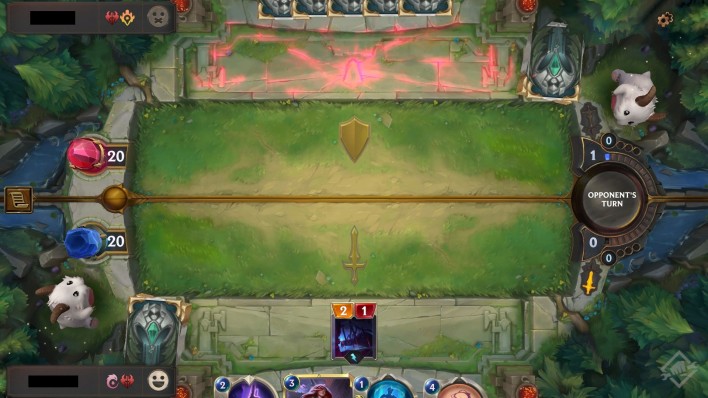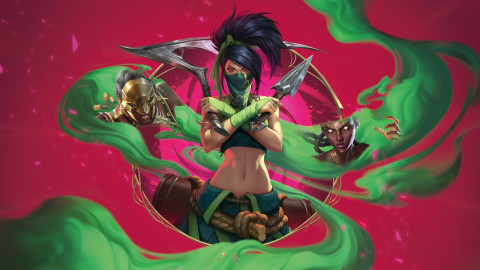
Many card games, especially the competitive ones, require a resource to be spent in order to play cards. In Legends of Runeterra, you need to spend mana in order to play cards. In this guide we’ll explain exactly how mana works in the game, and highlight a couple of cards that have unique interactions with the mana system.
Both players start a game with zero mana. After you and your opponent have decided which cards you want to keep in your opening hand, the first round starts. At the start of each round, including the first one, both players gain one more mana to spend each round, regardless of whether they’re the attacker or defender. This goes on until ten mana is reached, at which point you’ll stop earning extra mana to spend.

There is a unique feature in Legends of Runeterra when it comes to mana: the game has so-called “spell mana”. When you don’t end up spending all your mana in a turn—also known as “floating” mana—up to three mana is stored. This is mana you can exclusively use to cast spells.
The idea behind spell mana is that in theory, when you ended up floating mana in your previous turn, you’re behind on board because your opponent potentially did spend all their mana on cards. With spell mana you can do just a bit extra the next turn to catch up again. Unspent spell mana is stored indefinitely. When you cast a spell though, it will use up spell mana first before tapping into your regular mana.


(Notice the highlighted gems, glowing in white)
While spell mana may be easy to grasp, it’s one of the more complicated aspects of Legends of Runeterra to master. The great players distinguish themselves by thinking turns ahead about which spell they may draw from their deck, and save up spell mana long before. Of course, sometimes you’re forced to respond to your opponent immediately. Learning to think one or two turns ahead, and what you may need spell mana for to swing the board in your favor, will massively improve your results.
There aren't many cards that directly manipulate mana in Legends of Runeterra—it's a powerful mechanic to manipulate. There are a few though, and below are a few examples of cards that have special interactions with the mana system in the game.



Images via Riot Games.
-

Storyteller by heart. If something is competitive, I am interested in it.
Sort by:
Comments :0





